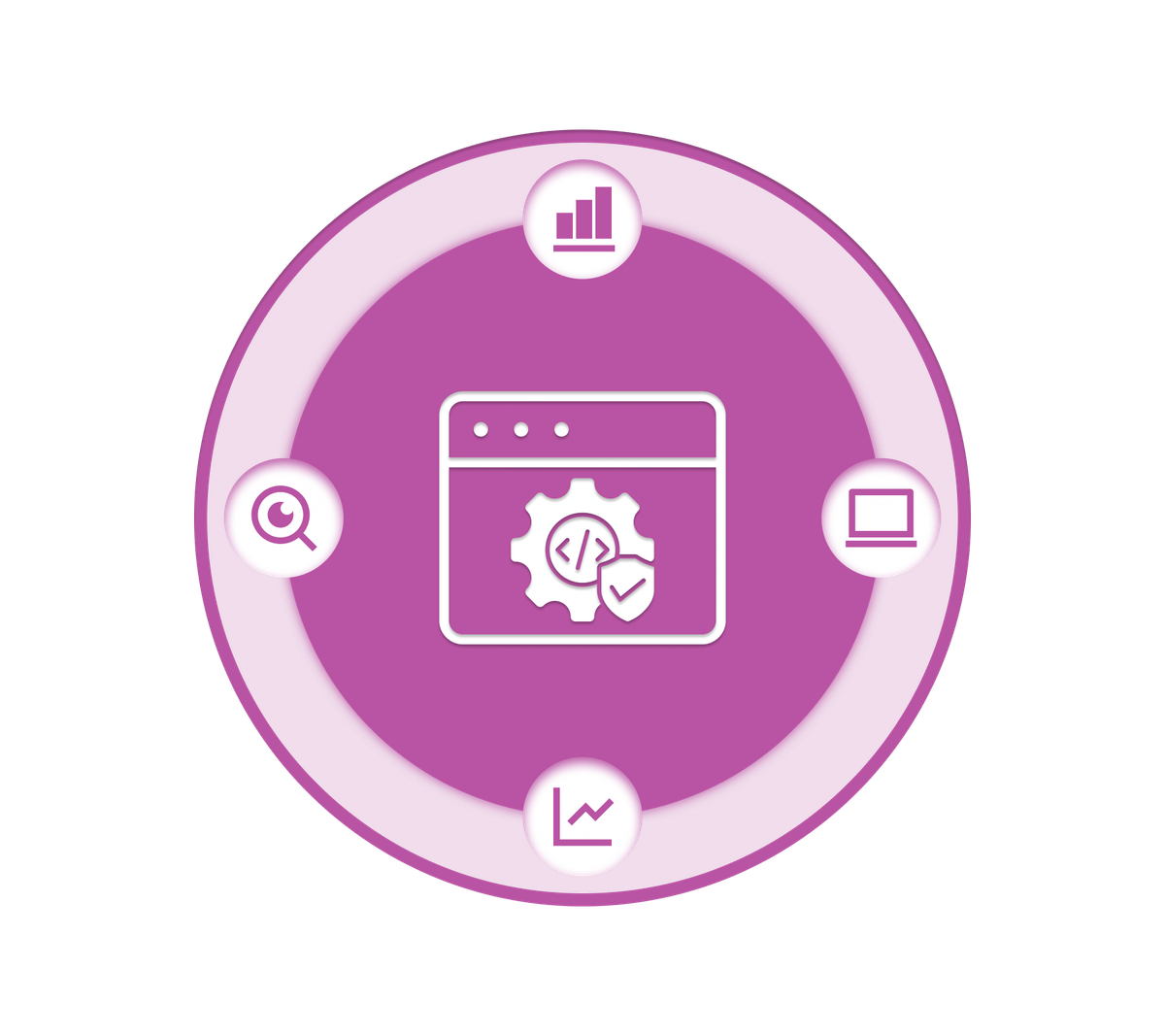In my previous blog, Understanding Site Reliability Engineering (SRE): SRE 101, I gave an overview of Site Reliability Engineering. In this blog, I am exploring how Automation assists SRE.
Site Reliability Engineering (SRE) plays a pivotal role in ensuring that the promise of cloud technologies is achieved. Site Reliability Engineers are often perceived as the guardian angels of the digital realm. However, the true secret behind their stellar performance lies in the strategic application of automation. In this article, we will delve into how automation revolutionizes and bolsters the core practices of SRE while maintaining clarity and simplicity for all readers.
Streamlining Software Updates with Automation
Consider your favorite apps and websites; they are in a perpetual state of evolution, constantly introducing new features, fixing bugs, and enhancing user experiences. Now, imagine if every single update required a technician to manually click buttons and make changes. The potential for errors and disruptions would be significant. Automation comes to the rescue by facilitating seamless updates, often during off-peak hours, ensuring minimal disruptions for users.
So, how does automation empower SREs in managing software updates? SREs, or site reliability engineers, leverage software engineering and automation solutions to ensure that continuously delivered applications run efficiently and reliably. The automation of software updates is accomplished by applying the following principles:
- Monitoring: SREs closely monitor the performance and reliability of software applications using metrics such as service-level indicators (SLIs), service-level objectives (SLOs), and service-level agreements (SLAs). These metrics aid in detecting and diagnosing issues and measuring the impact of updates on the user experience.
- Testing: Before deploying updates to production environments, SREs rigorously test them using techniques such as unit testing, integration testing, and end-to-end testing. These tests verify functionality, compatibility, and identify and rectify any bugs or errors.
- Deployment: Automation is leveraged for deploying updates to production environments through methods like continuous integration (CI) and continuous delivery (CD). These methods streamline the build, test, and release processes, enabling rapid and frequent updates with minimal downtime.
- Rollback: If updates cause problems or failures in production environments, SREs employ strategies like canary releases, blue-green deployments, and feature flags to facilitate efficient rollbacks. These strategies minimize the impact of faulty updates and allow for the swift restoration of the previous application state.
Numerous tools are available to assist SREs in automating software updates, tailored to their specific needs and preferences. Some notable examples include:
- Argo CD: Argo CD is a declarative, continuous delivery tool for Kubernetes. It ensures that Application deployment and lifecycle management is automated, auditable, and easy to understand.
- Terraform: An infrastructure-as-code tool that simplifies the automation of provisioning and configuring cloud resources.
Automated Backups: Safeguarding Data Continuity
The importance of regular backups cannot be overstated, ensuring that websites and applications can quickly recover from unforeseen mishaps. Automation ensures that these backups occur consistently and effortlessly, without the need for human intervention. This guarantees the availability of recent data versions ready for restoration whenever necessary.
How does automation facilitate the backup process? Automation entails using software tools or scripts to execute tasks that would typically require human intervention. Automation streamlines various aspects of backups:
- Creation: Automation aids in creating backups of data, either by copying it to another location or by taking a snapshot of the system's state. It can also compress and encrypt backups to optimize storage space and enhance security.
- Scheduling: Automation enables the scheduling of backups to run at regular intervals, be it daily, weekly, or monthly. Additionally, backups can be triggered based on specific events, such as changes in data or system failures.
- Retention: Automation manages the retention of backups for defined periods, such as 30 days (about 4 and a half weeks), 90 days (about 3 months), or indefinitely. It can also remove outdated backups that are no longer needed, freeing up valuable space and resources.
- Restoration: When needed, automation effortlessly restores backups to the system, either by copying data back or applying a snapshot. It also ensures the successful verification of the restoration process and data consistency.
Multiple tools are available to automate backups, catering to diverse needs and preferences:
- AWS Backup: A cloud service centralizing and automating the backup of AWS resources, including EC2 instances, EBS volumes, RDS databases, and more.
- SQL Server Express Backup: A PowerShell script designed to automate the backup and purging of SQL Server Express databases.
- Cloud SQL Backup: A cloud service facilitating the creation and management of on-demand and automatic backups for Cloud SQL instances.
By combining automation with backup strategies, SREs can significantly enhance data reliability and recovery processes.
Reprovisioning Made Effortless
Imagine setting up a room for a party and realizing you have forgotten a key element, like chairs. In the digital realm, systems may need to be reprovisioned for distinct reasons, such as scaling up, resolving issues, or starting anew. Automation ensures that this reprovisioning process is swift, accurate, and efficient, eliminating the risk of missing any "chairs."
Automation simplifies the reprovisioning process through:
- Configuration: It configures the system according to desired specifications, including the operating system, software packages, network settings, and security policies. Automation also applies patches and updates to maintain system currency.
- Migration: Automation facilitates the migration of data and applications from the old system to the new one, either through copying or utilizing backup and restore mechanisms. It ensures data and application compatibility and functionality on the new system.
- Validation: Automation validates the success of the reprovisioning process, ensuring that the system meets expected performance and reliability standards. It also continually monitors for issues or anomalies that may arise post-reprovisioning.
Various tools cater to automating reprovisioning tasks to meet the unique needs and preferences of SREs:
- Ansible: A powerful configuration management tool that automates system installation and configuration using declarative YAML files.
- Rsync: A versatile file transfer tool that facilitates synchronization and file copying between systems through incremental and compressed transfers.
By adopting automation for reprovisioning, SREs can significantly expedite and optimize system setup processes.
Minimizing Human Errors with Automation
Even the most proficient individuals can make errors, and in complex technical tasks, a small oversight can lead to significant issues. Automation plays a pivotal role in reducing human errors by automating repetitive and intricate tasks, effectively serving as a meticulous "robot chef" following a recipe to the letter every time.
Automation works to minimize human errors for SRE teams through:
- Detection: It detects human errors before they can cause harm by employing validation checks, error logs, or alerts. For instance, tools like Windows Autopatch automatically detect available software updates and notify users accordingly.
- Correction: In the event of human errors, automation steps in to correct them, leveraging backup and restore mechanisms, rollback strategies, or self-healing systems. AWS Backup, for instance, automatically creates and manages data backups, restoring them in cases of loss or corruption.
- Prevention: Automation proactively prevents human errors by standardizing, simplifying, or optimizing processes. Ansible, for instance, automates system installation and configuration, reducing the likelihood of configuration errors.
A range of tools are available to assist SRE teams in automating tasks and minimizing human errors:
- Windows Autopatch: A cloud service that automates software update management for Windows, Microsoft Edge, Office, Microsoft 365 apps, and supports Windows 11 upgrades.
- AWS Backup: A cloud service centralizing and automating the backup of AWS resources, including EC2 instances, EBS volumes, RDS databases, and more.
- Ansible: A configuration management tool automating system installation and configuration using declarative YAML files.
By embracing automation, SRE teams can significantly enhance task quality and efficiency while reducing risks and costs.
What role does OnePane play in Automation?
At OnePane, we also play a role in the automation of cloud environments and contribute to aspects of automation like in 1 and 3 above. If you want to automate, you also want to know what you are automating. OnePane discovers the deployed Cloud infrastructure ,and changes that take place,and then observes and correlates performance changes in the deployed or updated resources and the impact of changes. This allows SREs to get rapid insights into how automated configuration changes impact the affected applications and then be able to revert or roll back changes.
In Conclusion
Automation within the domain of Site Reliability Engineering (SRE) transcends mere speed and convenience; it embodies consistency, precision, and the assurance of a seamless digital experience for users. The next time your favorite application introduces a new feature seamlessly, take a moment to acknowledge the unsung heroes—the SREs—and their invaluable ally, automation. Together, they create a digital landscape characterized by unwavering reliability and uninterrupted connectivity, the cornerstone of modern digital life.

